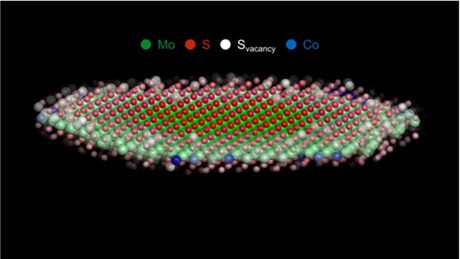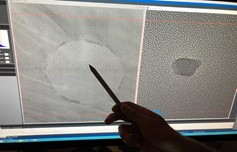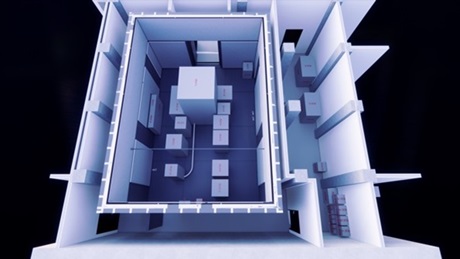2021
The Center for Visualizing Catalytic Processes (VISION) strives at understanding how chemical reactions are catalyzed by individual nanoparticles in order to contribute fundamental new insights into the chemistry that is the key to the sustainable production of chemicals, fuels and energy. In 2021, VISION continued to establish its activities with major results including:
Through close collaboration with international leading partners, VISION has developed three-dimensional imaging of individual nanoparticles with atomic resolution (Figure 1). Importantly, the method relates vibrational blur and displacements of the atoms, which may lead to new insights into catalytic functionality at the atomic level. The new approach was published in the journal Nature Communications.
 |
| Figure 1. Three-dimensional, atomically resolved image of a Co-Mo-S nanocrystal. Atom type and position are indicated by colored spheres. The image sums successive images so reduced atom residence near the edges are illustrated by increased transparency. Adapted from Nat. Commun. 12, 5007 (2021). |
In parallel, VISION has focused on introducing a new type of microfabricated reactor for simultaneous measurements of the atomic structure and catalytic activity of single nanoparticles using electron microscopy. The VISION team has developed a protocol for depositing individual nanoparticles in such reactors (Figure 2) and for confining chemical reaction environments around individual nanoparticles.
 |
| Figure 2. Electron microscopy images of a single Pt nanoparticle in a microfabricated reactor. (Left) A nanoparticle deposited in through a mask consisting of a graphite layer (dark) with a few micrometer wide hole (light). (Right) The nanoparticle imaged at high magnification. |
VISION has also actively participated in the design of a new electron microscope and associated laboratory at DTU. The laboratory will be part of a new interdisciplinary research environment in a new building, Climate Challenge Laboratory, at DTU Campus in Kgs. Lyngby to establish the greatest possible synergy in research.
 |
| Figure 3. Design of the microscope laboratory. The laboratory (ca. 55 m2) is isolated from the building to screen against environmental disturbances. The microscope reaching a height of ca. 4 m is the highest among the instrumentation cabinets. |